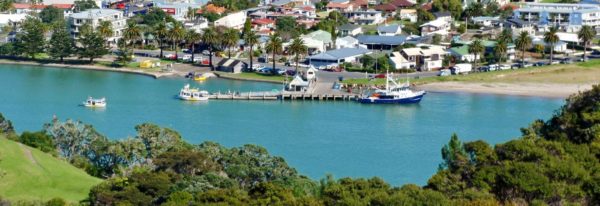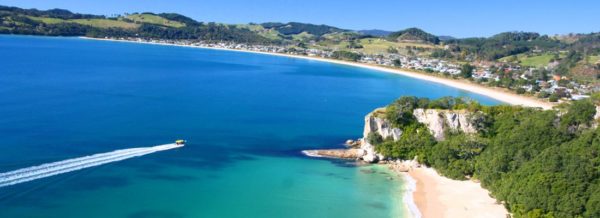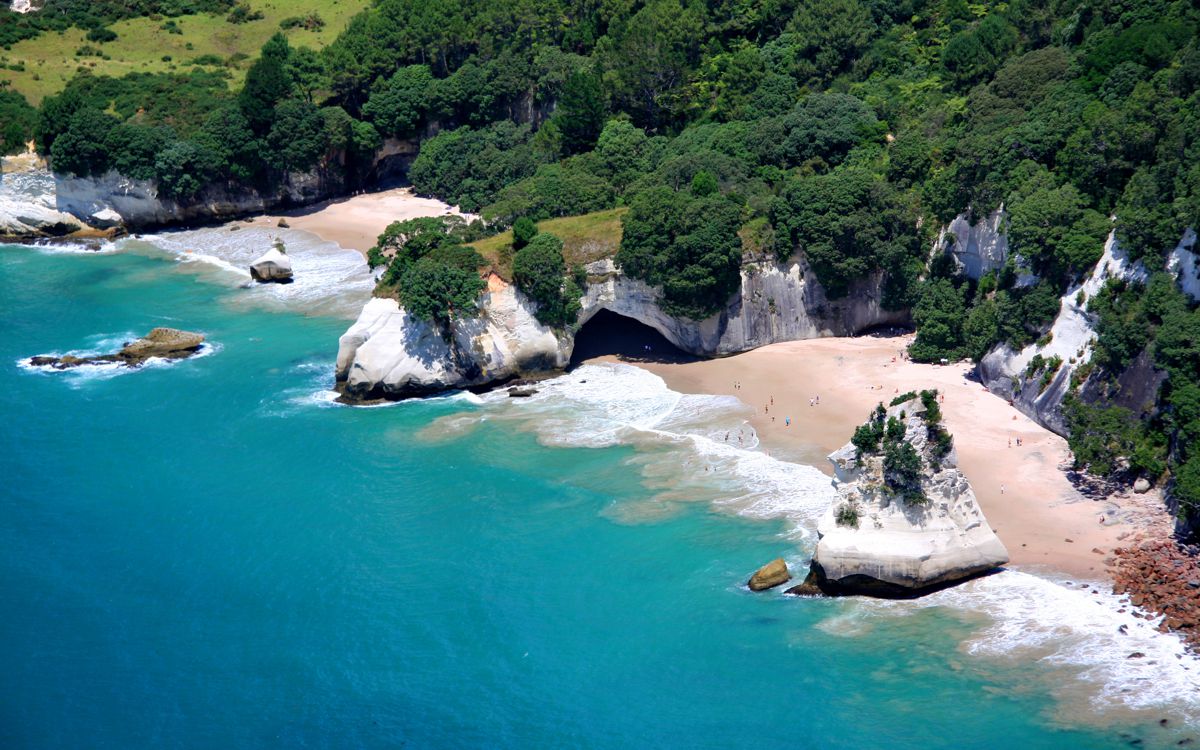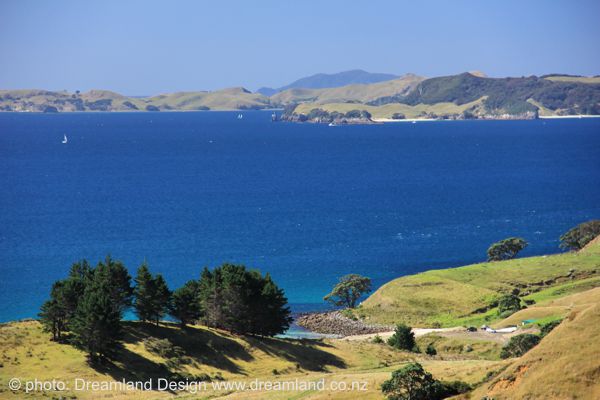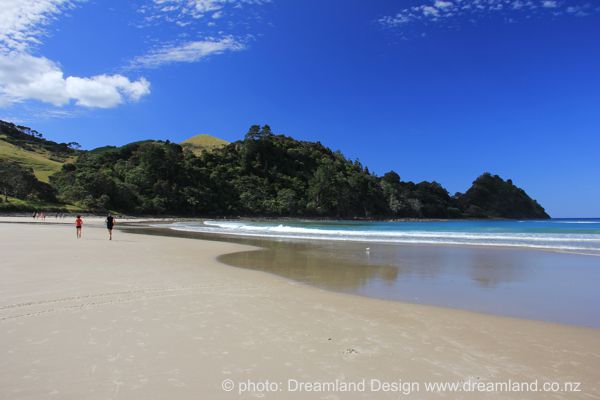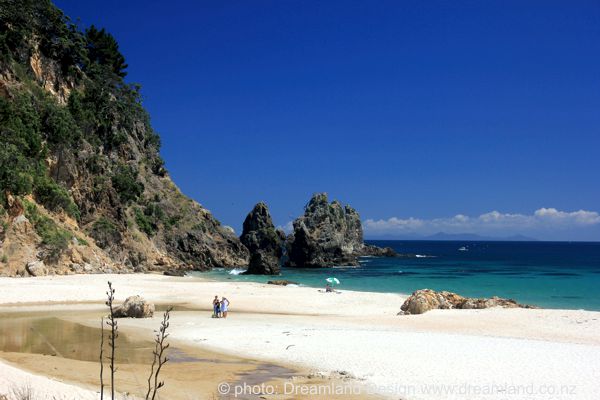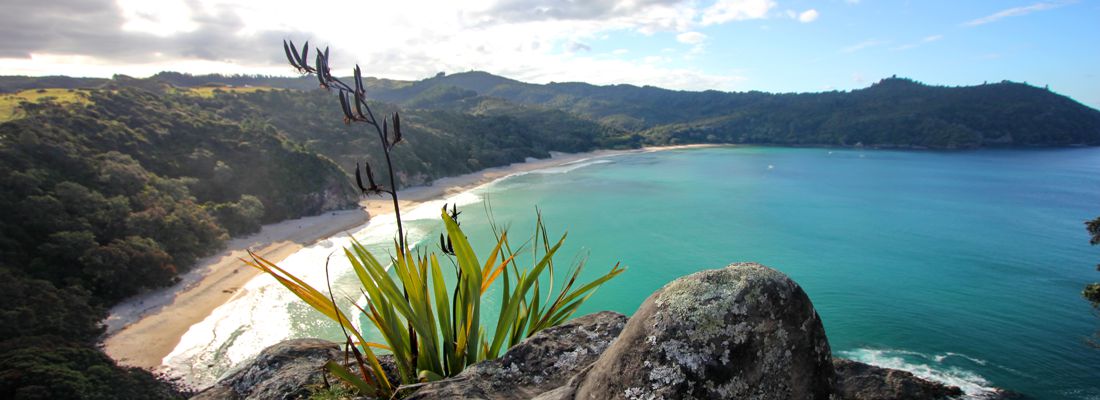Whitianga & Mercury Bay
Whitianga & Mercury Bay – Located on the east coast of the Coromandel, Mercury Bay’s main town of Whitianga has attracted visitors for more than a thousand years, since Maori explorer Kupe first settled here around 950A.D. But it was Captain James Cook who gave the area its name, when he anchored in the bay in 1769 to observe the transit of Mercury. Now an established tourist resort, the Bay’s spectacular coastline is dotted with islands and its relatively sheltered waters are perfect for all water sports. There are a large range of activities to enjoy. Buffalo Beach – named after the H.M.S. Buffalo wrecked here in 1840, this beach offers safe swimming, plus good fishing and shellfish collecting. Further north is Wharekaho Beach, where the areas main Maori Pa was located. Whitianga Wharf – the centre for boating and fishing activity, where you can take the passenger Ferry to Ferry Landing and Flaxmill Bay or the shuttle to Cooks Beach, Hahei, Hot Water Beach and Cathedral Cove.
An enjoyable excursion for young and old is the ferry crossing across the river to Ferry Landing. Passengers alight at the oldest stone wharf in Australasia. A short walk up the hill from the ferry leads to Front Beach then on to Flaxmill Bay. There are several walks up and around Shakespeare Cliff and surrounding beaches or explore further to Cooks Beach.
Cathedral Cove
Cathedral Cove – Accessible only on foot or by boat, famous Cathedral Cove is one of the “must visit” sites on the Coromandel Peninsula. The track begins at the northern end of Hahei. Cathedral Cove Marine Reserve, Te Whanganui- A-Hei, covers 9 square kilometers and is New Zealand’s sixth marine reserve. It is administered by the Department of Conservation. This site was chosen for a marine reserve because of the rich and varied habitats associated with the coastline and outlying islands. Reefs of hard rock, soft sediments, intricate caves and underwater arches provide homes for complex communities of plants, crustaceans, molluscs and fish. Sheltered from the worst of the southerly winds Te Whanganui-A-Hei gives visitors an opportunity to learn from and enjoy an unspoiled marine environment.
Cathedral Cove Walk There are several scenic tracks on land adjacent to the reserve, including the 2hr return walk to Cathedral Cove track, which gives access to Gemstone Bay, Mares Leg and Cathedral Cove. Foot access to the Cathedral Cove car park is at the western end of Hahei Beach and vehicle access is up Grange Road (turn left past shops and go all the way to end of Grange Road).
Hahei – from the lookout of this attractive beach (named after the Maori Chief Hei) there is access to Cathedral Cove and the Marine Reserve.
Hot Water Beach
Hot Water Beach – Some volcanos develop huge underground reservoirs of superheated water. Over time, this water will escape to the surface — cooling on the way. There are two fissures at Hot Water Beach issuing water as hot as 64˚C (147˚F) at a rate as high as 15 liters/minute. This water contains large amounts of salt (NOT salt water), calcium, magnesium, potassium, fluorine, bromine and silica. There are other hot water springs nearby but the location of these two springs on the beach make them unique. The hot springs are only accessible at low tide, however more often than not two hours each side of low tide, will still provide you with an opportunity to dig your own spa. Spades are available for hire at a local store
North of Whitianga
A short distance north of Whitianga is Wharekaho Beach where there is a fine stand of Pohutukawa trees. One of these is a gnarled old specimen that exactly fits a description in the journal of explorer Captain Cook written in 1769. A further 18km north over a scenic winding sealed road is Kuaotunu, gateway to the pristine beaches of Otama and Opito. These beaches are worth the journey but are accessed only by travelling over a steep, winding, narrow, unsealed road.
As you travel towards Coromandel you may visit the white, sandy beaches of Matarangi and Whangapoua. The warm climate and rich soils of the Coromandel promote lush growth and this is shown in the native bush that covers much of the Peninsula. Huge majestic trees, including Kauri that survived the intense milling of last century, have been protected and can be seen by the highways and walking tracks.

